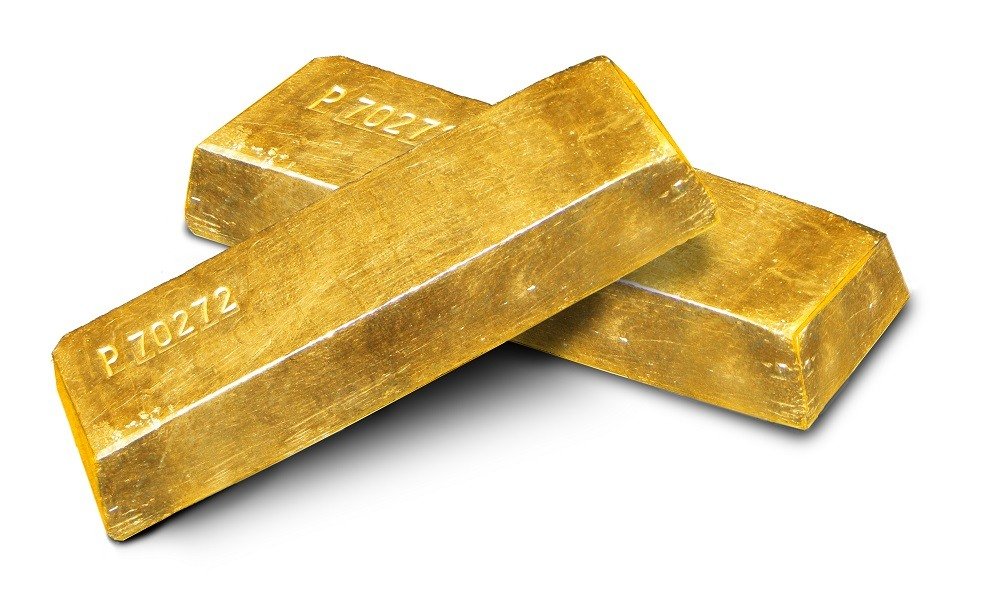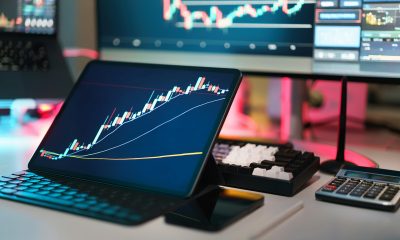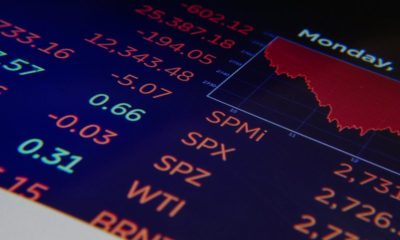Business
The 3 global factors which determine the current trend of buying gold
A precious metals analyst for Standard Chartered Bank believes rising political uncertainty across Europe could prompt renewed interest in gold.

Latest news in the metals market: Political uncertainty across Europe could prompt renewed interest in gold, Congress legalizes silver dollars, 3 global factors could determine the current trend of buying gold, and much more.
Just how hungry is China/Mining.com:
China alone consumed approximately 2,000 metric tons in 2016, or roughly 60 percent of all the new gold that was mined during the year, according to veteran mining commentator Lawrie Williams, who based his estimates on calculations made by BullionStar’s Koos Jansen. The 2,000 metric tons is a much higher figure than what analysts and the media have been telling us, but I’ve always suspected China’s annual consumption to run higher than “official” numbers.
Mid-Week Trivia:
As we talk about Karats today I ask you about Carrots; What country started the concept that Carrots are good for your eyes?
Political uncertainty across Europe could prompt renewed interest in gold/Standard Chartered Bank:
A precious metals analyst for Standard Chartered Bank believes rising political uncertainty across Europe could prompt renewed interest in gold. Writing in the World Gold Council’s latest edition Gold Investor, expert Suki Cooper, says unchecked US inflation, Brexit negotiations and the uncertainty surrounding Trump’s international policies could trigger another bout of hedging and safe-haven demand for gold.
She states: “Although gold is often at the mercy of US policies, they are not its sole macro driver. Significant upside risk lurks in 2017, and it sits outside the US: namely, the potential shocks stemming from the shifting political plates in Europe. Gold draws broad-based safe-haven demand in the event of systematic risk such as the great recession, and the elections across Europe this year have scope to shock markets again.”
Gold speculators pulled back on bullish net positions for 2nd week/Zachary Storella:
Large speculators and traders reduced their bullish net positions in the gold futures markets last week for a second consecutive week, according to the latest Commitment of Traders (COT) data released by the Commodity Futures Trading Commission (CFTC) on Friday. The non-commercial futures contracts of Comex gold futures, traded by large speculators and hedge funds, totaled a net position of 109,752 contracts in the data reported through February 14th. This was a weekly change of -7,397 contracts from the previous week which had a total of 117,149 net contracts.
Gold speculative positions, despite two weekly declines, remain above the +100,000-net bullish level for the sixth consecutive week after falling below this threshold for two weeks in late December and early January.
An interview with Roy Freidman-President of MTB/SilverDoctors:
Silver just shot through its 200-day moving average near $18 and looks like it wants to run to $19 here. Gold is converging on its own 200 days moving average – currently just above $1260, but gold in particular really looks fabulous on a 10-year chart. We’ re getting ahead of ourselves a bit here, but if and when gold takes out its highs near $1380 from last summer, it has a lot of room to run to the upside. When Asked How Trump’s Proposed Tariff Could Affect the Silver Market, Friedman Replied That a Tariff Would Have “No Impact on Silver Prices”
Peter Diekmeyer at Sprott/SilverDoctors:
World Gold Council data released earlier this month reveal a paradox. Demand hit 4,389 tons during 2016, but mines produced only 3,236 tons. Yet despite differing supply-demand fundamentals, gold prices rose by only 9%. A supply squeeze that size should have produced far bigger price action. Before investing in gold, investors need to assess whether the yellow metal, which has acted as money for at least 3,000 years (many claims longer), has better-staying power than paper and digital currency.
Gold ETFs gain from currency pain/Luzi-Ann Javier:
The flip side of declines in the euro, yen, and pound in recent months has been a massive increase in gold buying as investors in Asia and Europe try to protect their wealth. The hunger for bullion is so strong that purchases of exchange-traded funds backed by gold last year eclipsed buying by the world’s central banks, the biggest holders of the metal, for the first time since at least 2010. So far in 2017, investors poured $3.1 billion into the ETFs backed by precious metals, after a record inflow of $23 billion last year. That’s helped boost gold prices 6.8 percent since the end of December, following the biggest annual gain in five years.
Congress legalizes silver dollars/Andrew Glass:
Backed by Western mining interests and by many farmers, the Bland-Allison Act—which cleared the way for the minting of silver coins—became the law of the land on this day in 1878. The legislation required the U.S. Treasury to purchase between $2 million and $4 million worth of silver bullion each month at market prices and to put it into circulation as silver dollars.
US Mint to launch palladium eagle coins in 2017/SD:
Initially authorized by the American Eagle Palladium Bullion Coin Act of 2010, these coins might feature 3 different versions – bullion, uncirculated, and proof. However, the Act only mandated the creation of the bullion version of American Palladium Eagles, and left it at the Treasury Secretary’s discretion, whether the United States Mint should produce coins for collectors in uncirculated and proof versions. This legislation also stipulates that the designs on these coins should be ‘high relief.’
After Congress passed this Act in 2010, the Treasury Secretary commissioned an independent third-party study, to ascertain the market demand, which would influence the strike quantities for this coin. The findings of the agency handling this study, CPM Group, were submitted to the Secretary in 2013. The results of this study were supposed to determine the economic feasibility of striking these coins, directly affecting their availability.
Rising European car sales supportive for platinum/Strategist:
Stronger European car sales have been supportive for platinum, said Commerzbank in a snippet. European demand is especially important to the metal since diesel-powered vehicles, which need platinum for catalytic converters, are popular in Europe.
By contrast, gasoline-powered vehicles popular in the U.S. and China can use palladium instead. The European auto industry has got off to a strong start to the new year, Commerzbank added.
“According to the European Automobile Manufacturers Association, a good 10% more new cars were registered in the EU (European Union) in January than a year earlier. Because the European auto market is diesel-heavy, this has lent support first and foremost to the platinum price, which surged by 10% in January,” they concluded.
Copper futures off to a historic start to 2017/Youngling Chang:
Trading in COMEX Copper futures is off to a fast start in 2017. How fast? On February 13, the contract reached its fourteenth open interest record this year. That includes 11 consecutive record days in late January and early February. For a product that launched nearly 30 years ago, it’s easy to see why this is a historic month. Let’s take a look at what is behind the surge.
The economics of copper/Bloomberg:
Copper has been a volatile market for most of the past year. Beginning in January 2016, prices saw a slide following the reports of a soft landing for China’s economy. Copper is a key material used in industrial infrastructure, and China uses about 40 percent of the world’s supply, so any kind of movement in their economic outlook is likely to be reflected in the price of copper around the world. In fact, copper futures volume has grown for nine consecutive quarters since China’s economy entered a period of uncertainty, going from 3.4 million contracts traded in 4 2014 to 6.4 million in 4 2016.
Mining.com has more bullish news for copper/Frisk Ells:
In New York on Monday copper for delivery in March jumped 1.6% to $2.7515 per pound or $6,066 a ton after listed copper miner Freeport Memoranda said negotiations with the Indonesian government to restart exports from its Grabber mine in Papua province has stalled. Copper is trading at levels last seen late May 2015 with year-to-date gains of just under 9%.
Pete’s Corner:
About Counterfeit Gold Coins from 3-D printer/IT: Counterfeit Numismatic coins: The gold market is thriving with copies of coins designs because the numismatics are traded at a considerable premium over gold prices based solely on their designs. Every detail is vital, be it markings, details or individual words. Check everything before you buy it. The coins may be made of proper gold content, designs may even be copied to perfection and they can be artificially aged too, this is especially easy with the crude prehistoric designs but even with some new ones. If there is discoloration or some bumps etc. that are obvious markers of counterfeits. Make sure you buy the coins that have been graded by third-party specialists like the Professional Coin Grading Service (PCGS) or Numismatic Guaranty Corp. (NGC).
Optimism returns – hurts gold but helps silver/KitcoNews:
I have been getting emails asking why the silver has been so strong. I found this from our friend Peter Hug and I thought it might answer this question. U.S. reflation trade should bolster demand. Traders are expecting silver to test the 65:1 ratio, at a minimum, which at current gold prices, suggests that silver is at least $1 below fair value. Gold support remains at the $1,220 level. Should silver break above the $18.25 level, it suggests a $19 print may be the near-term target.
When you look at the Chinese banking system, private estimates are that the bad debts are 25% of total assets. Banks usually run with 5, maybe 7-8% capital. Even if you said 10% capital, well, if 25% of your assets are bad, that completely wipes out your capital, so the Chinese banking system is technically insolvent, even though they don’t admit that. Let’s say I’m a bank and I have a loan to a state-owned enterprise, a steel mill or something and the guy can’t pay me, can’t even come close to paying me and the loan’s due, I say, “Well, look, you owe me 300 million dollars. I’ll tell you what. I’ll give you a new loan for 400 million dollars, but I’ll take the money and pay myself back the old loan plus the interest, and then I’ll give the new loan to your maturity and I’ll see you in two years.”
So, if you did that in the U.S. banking system you’d go to jail. You’re not allowed to do that. You’re throwing good money after bad and you’re supposed to right off a loan that is clearly not performing or where the borrower is unable to pay. But in this case, it just extends to pretend, and so it’s still on the books, in my example, 400-million-dollar good loan with a two-year maturity, but in fact it’s a rotten loan that the guy couldn’t pay in the first place, and now he just can’t pay a bigger amount. He’s probably going to go bankrupt and I’ll have to write it off at the end of the day. So, with that as background for the Chinese banking system, people kind of shrug and say, “Well, can’t China just bail it out? They’ve got all this money.”
Pete:
Mike Gleason reprint of Jim Rickards interview on China’s hidden problem provides food for thought.
Mid-Week Trivia Answer:
The provitamin A beta-carotene from carrots does not actually help people to see in the dark unless they suffer from a deficiency of vitamin A. This myth was propaganda used by the Royal Air Force during the Second World War to explain why their pilots had improved success during night air battles but was actually used to disguise advances in radar technology and the use of red lights on instrument panels. Nevertheless, the consumption of carrots was advocated in Britain at the time as part of a Dig for Victory campaign. A radio programmer called The Kitchen Front encouraged people to grow, store and use carrots in various novel ways, including making carrot jam and Woolton pie, named after the Lord Woolton, the Minister for Food; England.
—
DISCLAIMER: This article expresses my own ideas and opinions. Any information I have shared are from sources that I believe to be reliable and accurate. I did not receive any financial compensation in writing this post, nor do I own any shares in any company I’ve mentioned. I encourage any reader to do their own diligent research first before making any investment decisions.

-

 Africa4 days ago
Africa4 days agoForeign Investor Activity in Morocco’s Equity Market in 2024
-

 Markets2 weeks ago
Markets2 weeks agoCotton Prices Firm as Demand Lags and Global Production Outlook Improves
-

 Biotech2 days ago
Biotech2 days agoJohnson & Johnson’s Tecvayli Combo Shows Breakthrough Results in Multiple Myeloma
-

 Impact Investing1 week ago
Impact Investing1 week agoEU Drops 2029 Gas Boilers Ban but Ends Incentives from 2025 in Shift Toward Cleaner Heating


























You must be logged in to post a comment Login